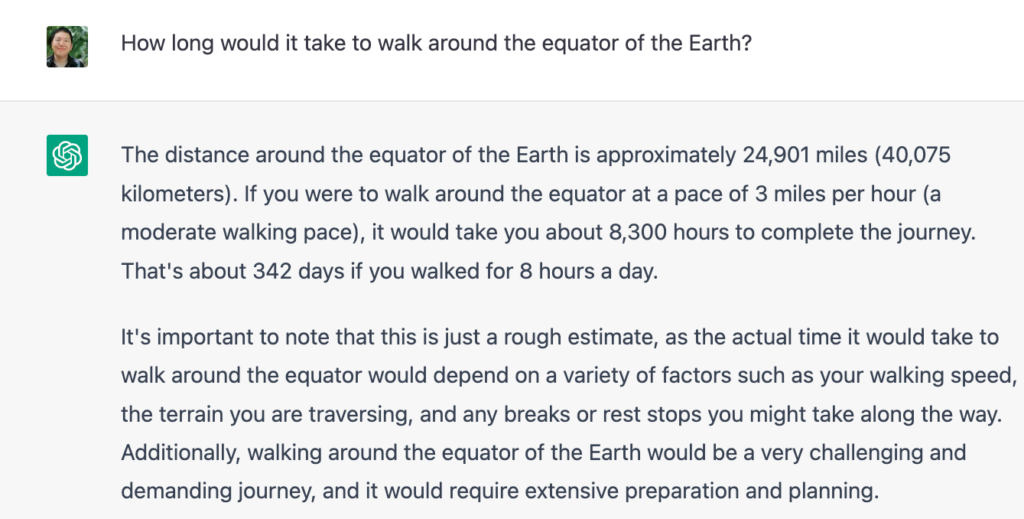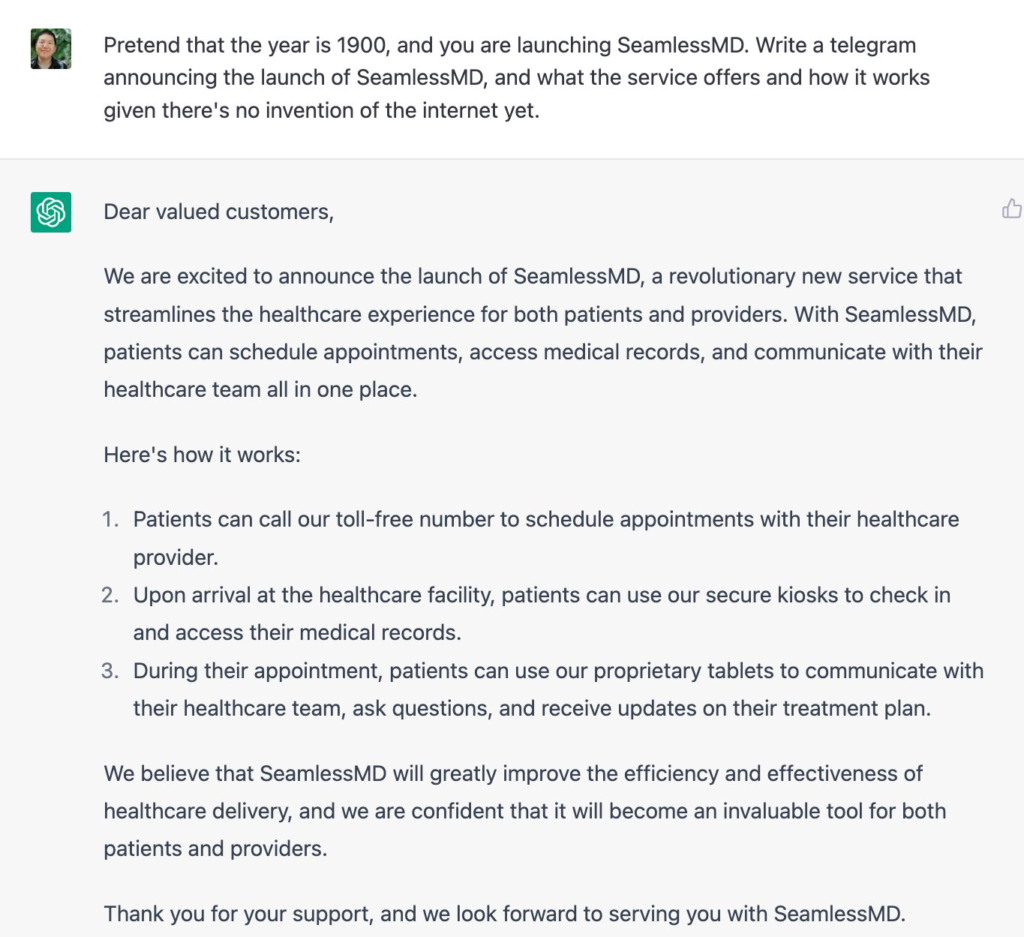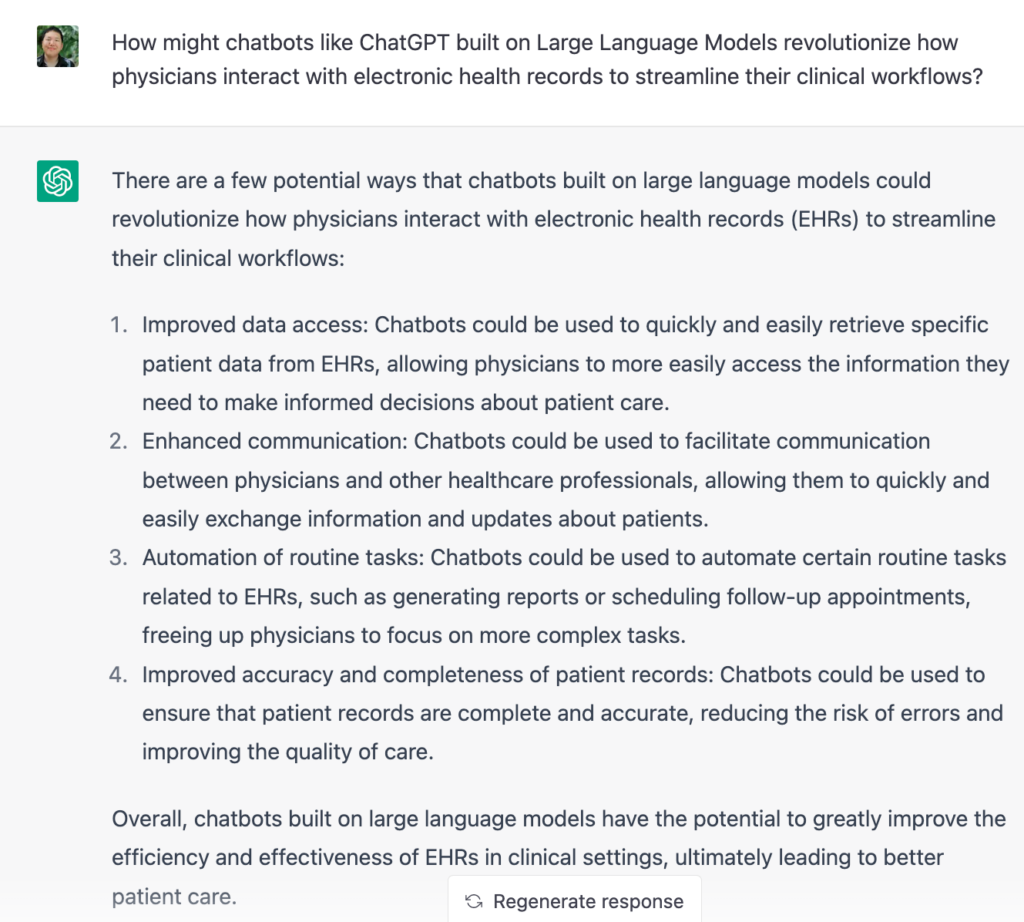The potential for Chatbots & Large Language Models (LLM) to revolutionize the Healthcare Provider experience
OpenAI released ChatGPT one month ago and already this next generation chatbot built on a sophisticated Large Language Model (LLM) has taken the world by storm. If you haven’t yet, I urge you to give it a try – it WILL blow your mind!
Chatbots are not new, but a few key traits have made ChatGPT and its underlying LLM particularly impressive:
- Breadth of knowledge: It is trained on such a large data set that it can converse on almost any topic, from philosophy to film to science
- Ability to synthesize information and generate insights in a human-like way: You can ask it any questions or give it a prompt/instruction, and the thoughtfulness and quality of the response is stunningly good.
Let’s start with a simple case. Compare asking Google vs. ChatGPT the same question. Whereas Google Search takes you to the most relevant website, ChatGPT actually provides a direct answer.

Pretty nifty, huh? But that’s not even the best part. Where it REALLY gets magical is when you give ChatGPT a “prompt” or specific instructions.
For example: What might a Digital Care Journey company like SeamlessMD look like if it were built for 1900’s healthcare? Even I might have trouble answering a creative question like that. No big deal for ChatGPT though! (Note that I provided zero context about SeamlessMD)

Holy guacamole, am I right?!
So what could Large Language Models and Chatbots mean for healthcare providers?
There’s been an explosion of consumer/patient-facing chatbot startups and innovations in the last few years, especially since the pandemic – e.g. chatbots to triage COVID-19 symptoms, schedule appointments, etc. Certainly even more advanced chatbots built on Large Language Models (LLMs) will emerge to tackle the patient consumer experience.
However, for this article, I want to focus more on the opportunity for LLMs to dramatically improve the clinician experience. Why?
- Hospitals and health systems are facing major staff shortages and clinician burnout issues
- Improving frontline clinician workflow issues with LLMs is lower hanging fruit than the complexity of getting patients to engage with LLMs (and the complexity of getting clinicians to buy-in to providing a patient-facing clinical solution too!)
So suppose that health system innovators, startups and even EHRs start to build Chatbots & LLMs to improve the provider experience. What possible use cases might emerge?
I expect low hanging fruit to be focused on saving clinicians time: either reducing time spent searching for information in the patient chart or minimizing effort on documentation. For example:
- Fast discovery of patient information: “What allergies does this patient have?” “What medications is this patient on?” “Is this patient on any blood thinners?”
- Streamlined clinical documentation and medical letters: “Draft a progress note based on today’s findings” “Draft a consult note based on today’s visit”
- Summarize trends in clinical and test data: “Review the imaging reports from the last 3 chest CTs and create a table that lists the tumour size by date of CT scan”
How will Chatbots / LLMs for providers be built? What will be the dynamic between startups, health system innovators and EHRs?
As with any disruptive digital health idea, I expect many innovators will try to build in this space. Most successful commercialization will probably come from startups, and there will be some tension with the EHRs who will also realize this feature should be core to their strategic priorities.
The most likely outcome? Perhaps some M&A in a few years where EHRs acquire the relevant AI talent and potentially a proven, integrated LLM-based solution.
That said, I am most interested to see which major EHRs will have the conviction and ability to recruit the AI engineering talent to build this in-house. Some will try to partner with big tech (most likely Google or Microsoft/Nuance), however it’s risky to delegate a potentially existential innovation to a third party for who this is not materially important to their core business. In many ways, given that LLMs/Chatbot interfaces would be best suited as tightly integrated experiences into both the EHR interface and the underlying data it houses (and other data systems it connects to), it could be in the EHRs best interest to develop it natively in-house.
The EHR that figures this out and dramatically improves clinician experience/satisfaction could have a major competitive advantage for the next 10+ years.
And if you still aren’t sold on whether Chatbots built on Large Language Models could transform how providers deliver care, don’t take my word for it. Even ChatGPT agrees:


